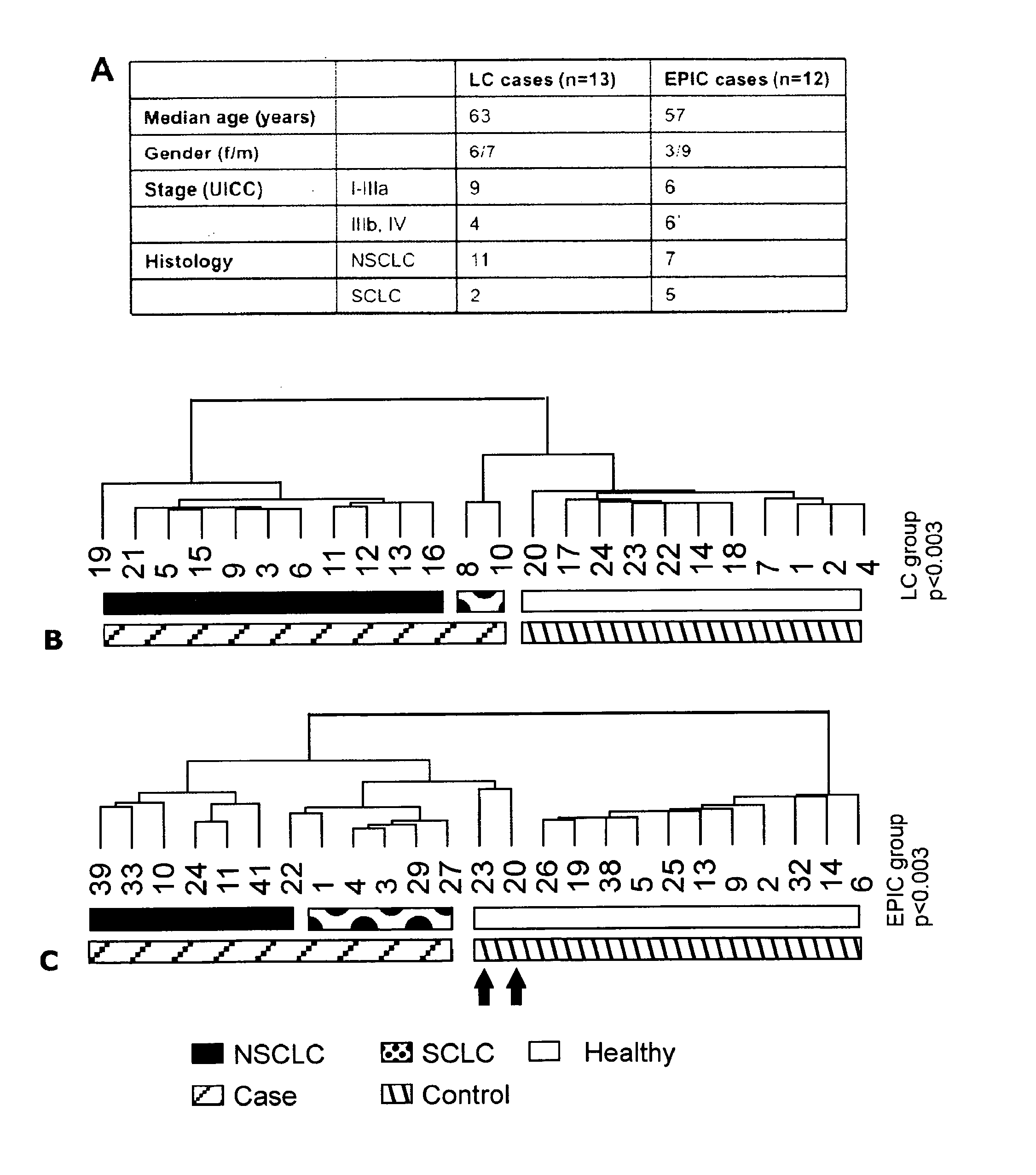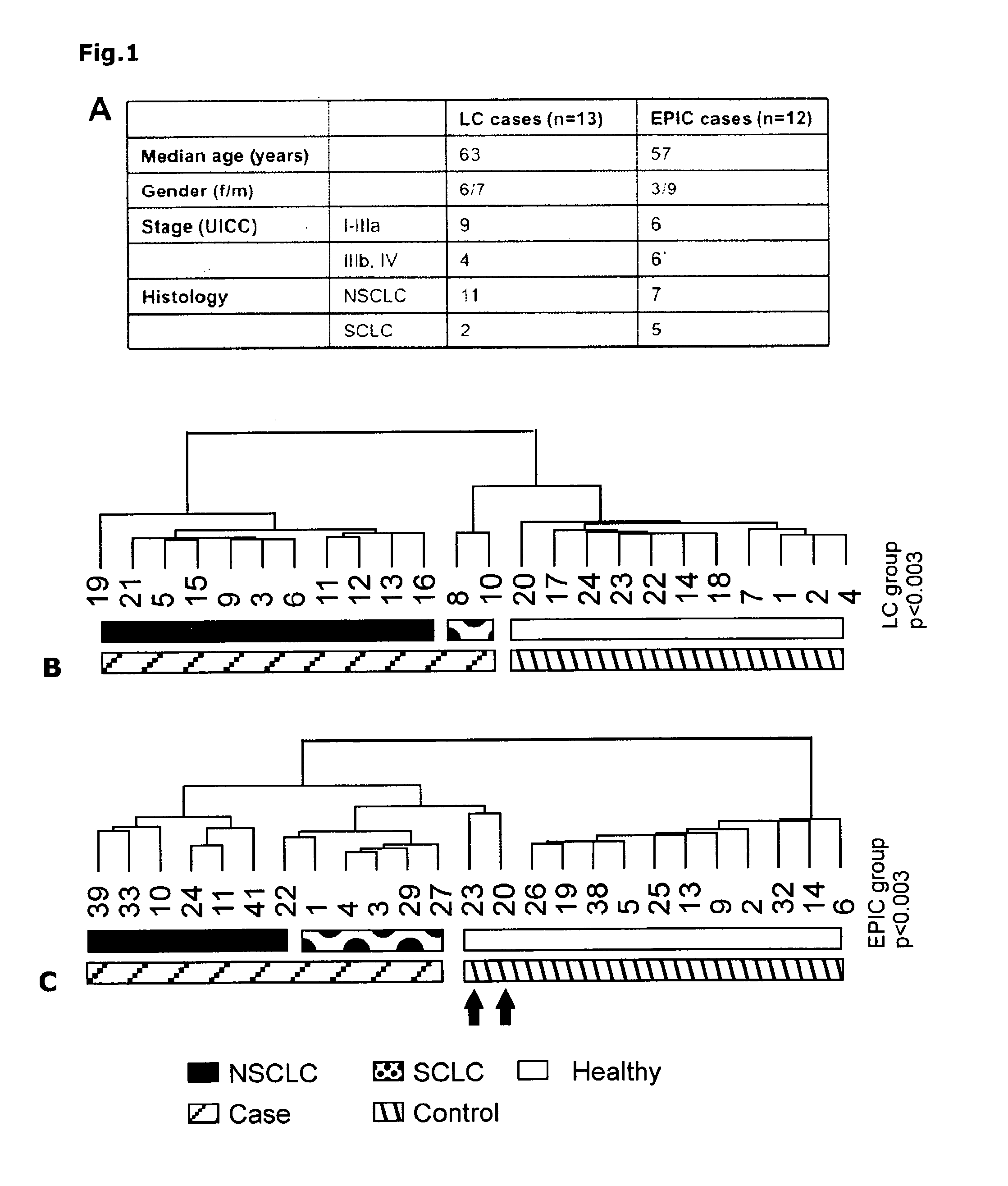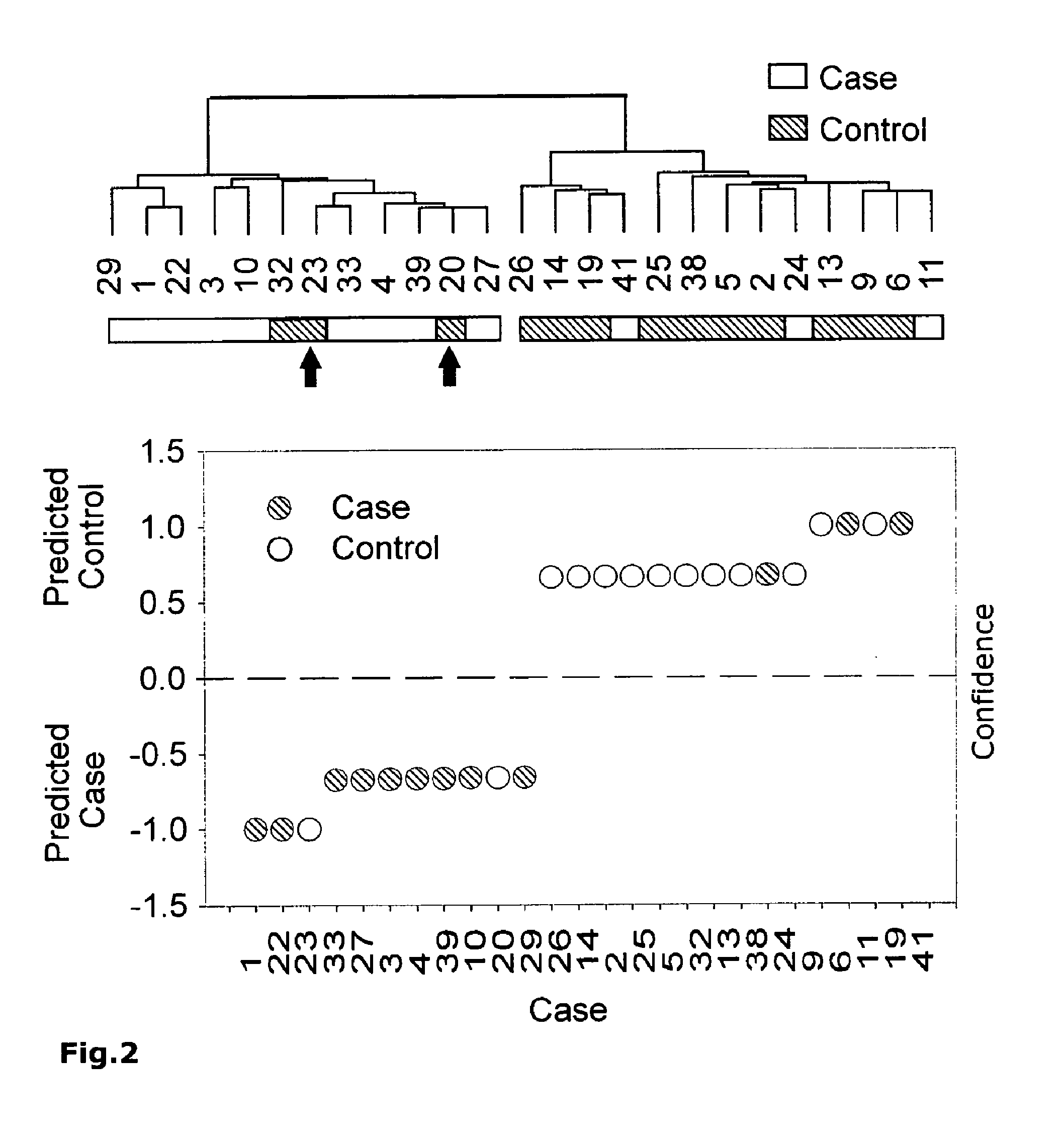Method for lung cancer early detection and prognosis
a lung cancer and early detection technology, applied in the field of lung cancer early detection and prognosis, can solve the problems of limited sensitivity or specificity, feasibility and cost, and the inability to apply widely enough of these methods
- Summary
- Abstract
- Description
- Claims
- Application Information
AI Technical Summary
Benefits of technology
Problems solved by technology
Method used
Image
Examples
examples
Materials and Methods
[0038]Recruitment of incident lung cancer cases in the EPIC-Heidelberg cohort: The European Prospective Investigation into Cancer and Nutrition (EPIC) is one of the largest epidemiological studies of diet and health. From 1993 to 1999 EPIC recruited 520.000 individuals aged over 20 years in 10 European countries. In Germany, 2 study centers (Heidelberg and Potsdam) contributed to EPIC. From all participants blood samples were collected at recruitment (Riboli, E., et al. Public health nutrition 5, 1113-1124 (2002)). Follow-up is still active and based on follow-up questionnaires, health insurance records and cancer and pathology registries. The participants of the EPIC Heidelberg cohort were drawn from a random sample of the general population of the Heidelberg area. All individuals entering the trial were healthy. 25540 individuals were recruited into this cohort between 1994 and 1998. A total of 21 incident lung cancer cases with a histologically proven diagnos...
PUM
| Property | Measurement | Unit |
|---|---|---|
| mean observation time | aaaaa | aaaaa |
| OD ration 260/280 | aaaaa | aaaaa |
| temperature | aaaaa | aaaaa |
Abstract
Description
Claims
Application Information
 Login to View More
Login to View More - R&D
- Intellectual Property
- Life Sciences
- Materials
- Tech Scout
- Unparalleled Data Quality
- Higher Quality Content
- 60% Fewer Hallucinations
Browse by: Latest US Patents, China's latest patents, Technical Efficacy Thesaurus, Application Domain, Technology Topic, Popular Technical Reports.
© 2025 PatSnap. All rights reserved.Legal|Privacy policy|Modern Slavery Act Transparency Statement|Sitemap|About US| Contact US: help@patsnap.com



